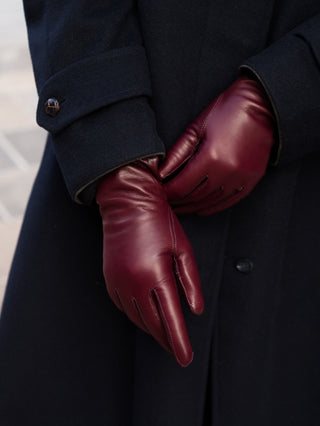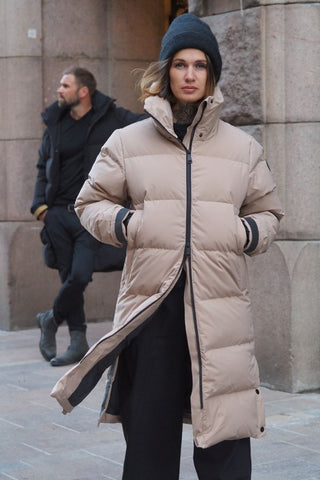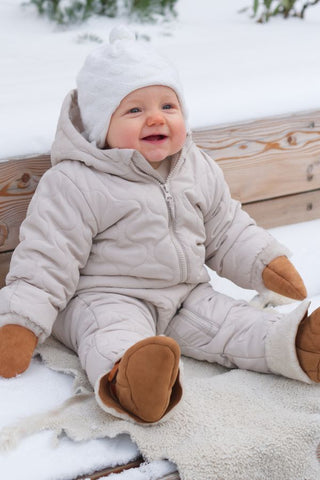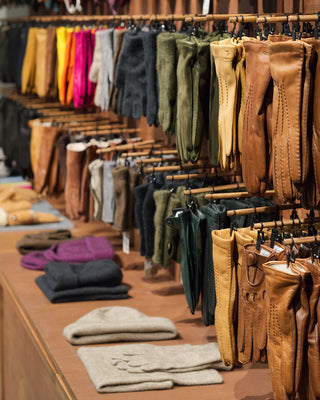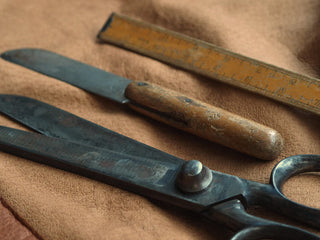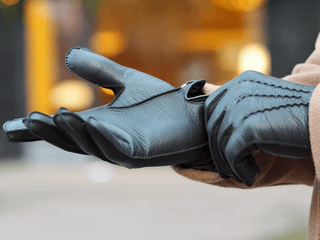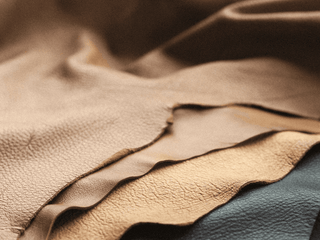-
- Peccary leather gloves
- Peccary boar leather (Finnish: peccary) Country of origin of the leather: Peru
- Knitted lining 55% cashmere 45% wool. Made in Italy.
- Dark brown gloves
- European craftsmanship
The noblest of gloves and leathers is the classic glove handcrafted from Peccary boar. This is a glove that is passed down from generation to generation, from father to son.
This glove combines two wonderful luxury materials, peccary and cashmere wool. The good thermal insulation of both materials makes these gloves great winter gloves that warm your hands even in severe frosts. The breathability of natural materials makes the gloves comfortable to wear throughout the winter.
Boar leather is velvety soft and durable. At its best, you will enjoy the gloves for years. The structure of the leather is reindeerus, which makes it very warm. The beautiful structure of the leather, together with its practical properties, make it a unique and special material.
In addition to the fact that peccary leather is perfect for gloves, its limited availability makes it valuable. Peccary leather comes from Peru, which is the only country that is allowed to sell this valuable leather. Indigenous communities living in the Amazon jungle hunt the animal for its meat. Hunting a CITES-protected animal is only allowed for survival. In other words, wild boars are not hunted for their leather, the leather is only a by-product. Each pair is unique, as the skins of wild animals also reflect the life lived by the animal.
The traditional model has three decorative stitches on the back of the palm. The shaft of the glove is about 5 cm long, which means it covers the wrist. Due to the thickness of the leather, the gloves are sewn with a counter-seam, which means the seam is also on the outside. This makes the glove very comfortable to hold in the hand, as there are no seam allowances on the inside of the glove pressing against the fingers. Sewing gloves is a very precise and time-consuming job. A seamstress only makes about 2.5 pairs of gloves per day.
Over 100 stages of careful craftsmanship and high-quality materials make these gloves a great investment.
The gloves should fit very snugly at first, so that they shape to fit the user's hand exactly. The most important step in determining the fit of gloves is cutting the leather. Using the centuries-old table cutting method, the gloves are given the right fit. Excess stretch is stretched out of the leather, leaving only the adjustment margin that ensures an excellent fit. This ensures that the gloves do not stretch even after prolonged use, but retain their fit. Each leather is processed separately. The skins of relatively small wild animals are very flawed, with many signs of life and even holes. Cutting the leather resembles a puzzle, as an experienced cutter finds the right places in the leather for each part of the glove. Fortunately, the leathers can be utilized precisely, because the gloves have many small parts between the fingers.
The lining inside the glove is practically a glove inside the glove. A mixture of sheep wool and cashmere wool has been chosen as the lining for these gloves. It combines the best of both materials. The knit is soft, breathable and provides excellent heat insulation. The wool also makes the lining a little more durable than 100% cashmere. Leather lasts longer in use than a knitted lining, so it is possible to replace the lining if necessary to extend the life of the gloves.
- Peccary leather gloves
- Peccary boar leather (Finnish: peccary) Country of origin of the leather: Peru
- Knitted lining 55% cashmere 45% wool. Made in Italy.
- Dark brown gloves
- European craftsmanship
The noblest of gloves and leathers is the classic glove handcrafted from Peccary boar. This is a glove that is passed down from generation to generation, from father to son.
This glove combines two wonderful luxury materials, peccary and cashmere wool. The good thermal insulation of both materials makes these gloves great winter gloves that warm your hands even in severe frosts. The breathability of natural materials makes the gloves comfortable to wear throughout the winter.
Boar leather is velvety soft and durable. At its best, you will enjoy the gloves for years. The structure of the leather is reindeerus, which makes it very warm. The beautiful structure of the leather, together with its practical properties, make it a unique and special material.
In addition to the fact that peccary leather is perfect for gloves, its limited availability makes it valuable. Peccary leather comes from Peru, which is the only country that is allowed to sell this valuable leather. Indigenous communities living in the Amazon jungle hunt the animal for its meat. Hunting a CITES-protected animal is only allowed for survival. In other words, wild boars are not hunted for their leather, the leather is only a by-product. Each pair is unique, as the skins of wild animals also reflect the life lived by the animal.
The traditional model has three decorative stitches on the back of the palm. The shaft of the glove is about 5 cm long, which means it covers the wrist. Due to the thickness of the leather, the gloves are sewn with a counter-seam, which means the seam is also on the outside. This makes the glove very comfortable to hold in the hand, as there are no seam allowances on the inside of the glove pressing against the fingers. Sewing gloves is a very precise and time-consuming job. A seamstress only makes about 2.5 pairs of gloves per day.
Over 100 stages of careful craftsmanship and high-quality materials make these gloves a great investment.
The gloves should fit very snugly at first, so that they shape to fit the user's hand exactly. The most important step in determining the fit of gloves is cutting the leather. Using the centuries-old table cutting method, the gloves are given the right fit. Excess stretch is stretched out of the leather, leaving only the adjustment margin that ensures an excellent fit. This ensures that the gloves do not stretch even after prolonged use, but retain their fit. Each leather is processed separately. The skins of relatively small wild animals are very flawed, with many signs of life and even holes. Cutting the leather resembles a puzzle, as an experienced cutter finds the right places in the leather for each part of the glove. Fortunately, the leathers can be utilized precisely, because the gloves have many small parts between the fingers.
The lining inside the glove is practically a glove inside the glove. A mixture of sheep wool and cashmere wool has been chosen as the lining for these gloves. It combines the best of both materials. The knit is soft, breathable and provides excellent heat insulation. The wool also makes the lining a little more durable than 100% cashmere. Leather lasts longer in use than a knitted lining, so it is possible to replace the lining if necessary to extend the life of the gloves.


